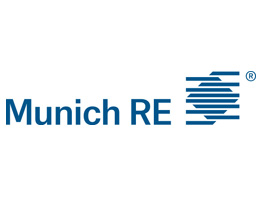Supreme Court Sides with Insurers in $12 Billion Affordable Care Act Deficit Dispute

When the Affordable Care Act — also referred to as Obamacare — was enacted, health insurers were hesitant to participate in the program.
In order to entice more insurers to participate, then, the U.S. created several initiatives, including the “Risk Corridors” program, which would act as a temporary framework “meant to compensate insurers for unexpectedly unprofitable plans during the marketplaces’ first three years.”
The program was signed into law in 2014, stating that if insurers had higher-than-expected costs in relation to the Affordable Care Act, the government would reimburse a portion of that, so long as the companies paid into the fund any unexpected savings.
This temporary fund was intended to act as a buffer for health plans that had sicker-than-expected customers in the newly overhauled insurance marketplace.
With the fund available to them, the health insurance firms agreed to give it a go.
However, health plans quickly racked up losses when the marketplace opened. “The program’s first year, 2014, tallied a deficit of about $2.5 billion,” court documents show.
Profitable plans owed the government approximately $362 million, while unprofitable plans were owed $2.87 billion. By the end of the Risk Corridors three-year program, the deficit exceeded $12 billion.
In 2015, in an attempt to get ahead of the high costs, lawmakers approved the first in a series of annual appropriations riders barring the Department of Health & Human Services from using taxpayer dollars to bankroll the program.
Four health insurance companies, Maine Community Health Options, Blue Cross and Blue Shield of North Carolina, Land of Lincoln Mutual Health Insurance Company and Moda Health Plan, Inc. brought forward a suit asserting that their plans were unprofitable during the Risk Corridors program.
They sued the federal government for damages.
The case worked its way to the Supreme Court. There, the justices reviewed the obligations, if any, the federal government had to reimburse the health care insurers as per the Risk Corridors program guidelines.
An “obligation,” the court defined as a “definite commitment that creates a legal liability of the government for the payment of goods and services ordered or received, or a legal duty … that could mature into a legal liability by virtue of actions on the part of the other party beyond the control of the United States.”
Under this definition, the court ruled that the Risk Corridors statue did create a government obligation to pay the insurers the full amount due to them.
Scorecard: The Supreme Court sided with the insurers, saying that, under the Risk Corridors program, the federal government did indeed owe the $12 billion deficit to the carriers.
Takeaway: When large, sweeping legislation comes into play, best practice is to review contracts and other programs associated with the law in order to prevent losses. &










